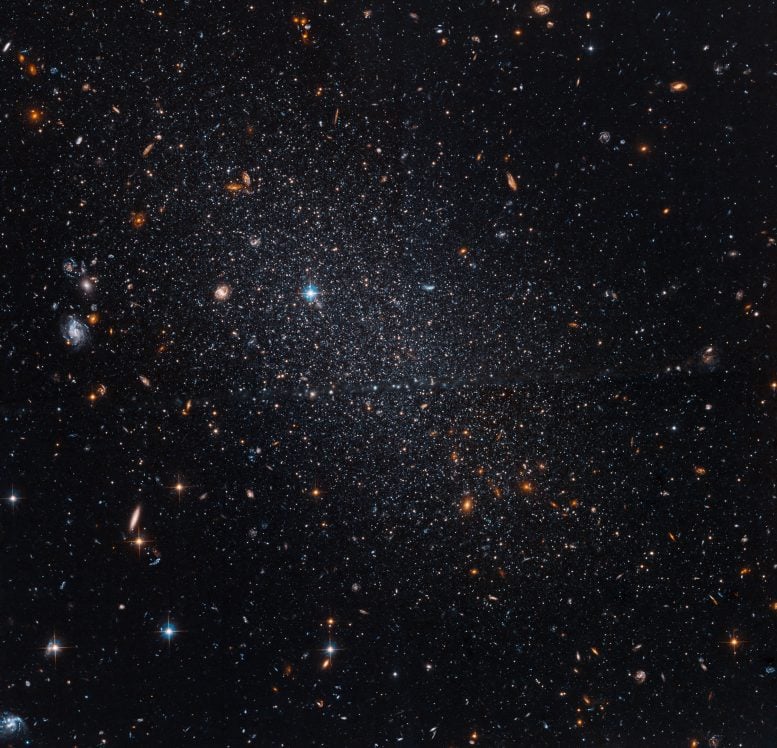Hubble Observes a Lonely Beacon in the Cosmic Dark


Situated in the constellation Tucana, the Tucana Dwarf is a distant and isolated galaxy observed by the Hubble Space Telescope.
It’s notable for its older stars and sparse dust, lying far from the Local Group’s center. This galaxy helps astronomers explore the early stages of galaxy formation and the universe’s history.
Tucana Dwarf Galaxy
A splatter of stars glows faintly at almost 3 million light-years away in this new image from NASA’s Hubble Space Telescope. Known as the Tucana Dwarf for lying in the constellation Tucana, this dwarf galaxy contains a loose bundle of aging stars at the far edge of the Local Group, an aggregation of galaxies including our Milky Way, bound together by gravity. The Tucana Dwarf was discovered in 1990 by R.J. Lavery, the same year Hubble launched.
Unique Characteristics of the Tucana Dwarf
What makes the Tucana Dwarf distinct from other dwarf galaxies comes in two parts: its classification, and its isolation. As a dwarf spheroidal galaxy, it is much smaller and less luminous than most other dwarf galaxies. Dust is sparse and the stellar population skews towards the older range, giving them a dimmer look. Additionally, the Tucana Dwarf lies about 3.6 million light-years from the Local Group’s center of mass, far from the Milky Way and other galaxies.
It is only one of two dwarf spheroidal galaxies in the Local Group to be this remote, making astronomers theorize that a close encounter with a larger galactic neighbor called Andromeda slingshotted it into the distance about 11 billion years ago.
The Tucana Dwarf as a Cosmic Fossil
Having such pristine properties enables scientists to use the Tucana Dwarf as a cosmic fossil. Dwarf galaxies could be the early ingredients for larger galaxies, and with older stars residing in such an isolated environment, analyzing them can help trace galaxy formation back to the dawn of time.
For that reason, Hubble reached far across the Local Group using the capabilities of the Advanced Camera for Surveys (ACS) and Wide Field and Planetary Camera 2 to meet this distant, lonely galaxy. Examining its structure, composition, and star formation history sheds light on the epoch of reionization, when the first stars and galaxies arose from the dark billions of years ago.
Source link



